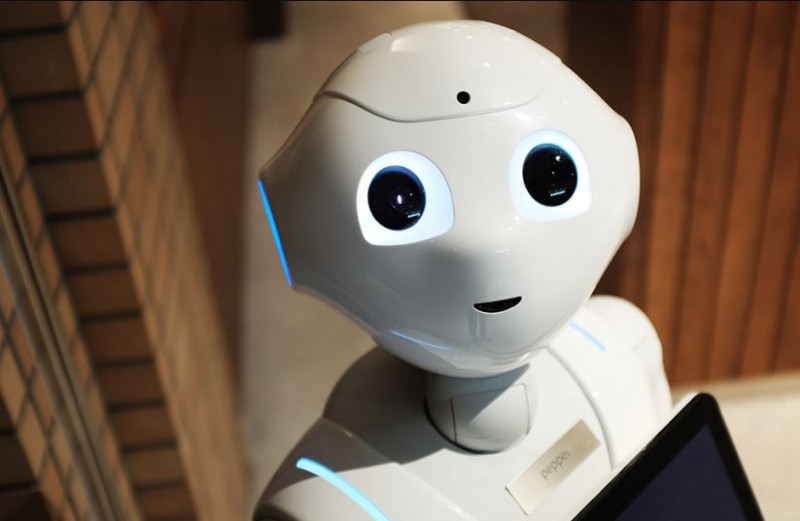
In recent years, advancements in the fields of robotics and biomedical engineering have paved the way for revolutionary innovations. One such cutting-edge technology is the development of biohybrid robots, which merge living tissues with robotics. This groundbreaking synergy has opened up new possibilities in the realm of biomedical applications, offering promising solutions to various challenges in medicine. In this article, we will explore the concept of biohybrid robots, their applications, and the potential impact they can have on the future of healthcare.
1. Understanding Biohybrid Robots
Biohybrid robots are a fascinating amalgamation of biological components and artificial structures. These robots incorporate living tissues, such as cells or even entire organs, with robotic elements to create a functional and adaptable system. The integration of living tissues into robots allows for enhanced responsiveness, self-healing capabilities, and increased biocompatibility.
1.1 The Biological Components
The biological components in biohybrid robots can vary, ranging from simple cells to more complex tissues. Researchers often use biological materials like muscle cells, nerve cells, or cardiac tissue to form the basis of these robots.
1.2 The Robotic Components
On the other hand, the robotic components provide the structural framework and control systems for the biohybrid robots. These can include synthetic materials, microelectronics, and sensors, all designed to work in harmony with the living tissues.
2. Advancements in Biohybrid Robotics
The field of biohybrid robotics has seen remarkable progress in recent years. Scientists and engineers are continuously pushing the boundaries of what these robots can achieve.
2.1 Enhanced Biocompatibility
One of the significant challenges in biomedical applications is the compatibility of foreign materials with the human body. Biohybrid robots address this issue by incorporating living tissues, reducing the risk of rejection and enabling seamless integration with biological systems.
2.2 Self-Healing Capabilities
Living tissues possess inherent regenerative abilities. By integrating these tissues into the robotic framework, biohybrid robots can self-heal in response to damage, leading to extended lifespans and improved functionality.
2.3 Personalized Medicine and Drug Testing
Biohybrid robots open up new avenues for personalized medicine. They can be engineered using a patient's cells, enabling researchers to perform drug testing and predict individual responses to treatments accurately.
2.4 Sensory Feedback and Adaptability
Living tissues provide biohybrid robots with sensory feedback, allowing them to respond to their environment dynamically. This adaptability is crucial for applications such as prosthetics, where precise movements and interactions with the surroundings are essential.
3. Applications of Biohybrid Robots
The fusion of living tissues and robotics in biohybrid robots holds immense potential for various biomedical applications.
3.1 Biomedical Sensing and Diagnostics
Biohybrid robots can be used as biosensors to detect changes in the body's internal environment. They could monitor vital signs, detect diseases, and provide real-time diagnostic information, revolutionizing healthcare monitoring.
3.2 Targeted Drug Delivery
With their ability to navigate through the human body efficiently, biohybrid robots can deliver medications directly to specific tissues or organs, reducing side effects and improving treatment efficacy.
3.3 Tissue Regeneration
Biohybrid robots could be utilized to facilitate tissue regeneration processes. By delivering growth factors and other bioactive substances directly to damaged tissues, they can accelerate healing and tissue repair.
3.4 Neuroprosthetics
In the realm of neuroprosthetics, biohybrid robots hold great promise. They can establish direct interfaces with the nervous system, restoring movement and sensory perception to individuals with neurological disorders or injuries.
4. The Future of Biohybrid Robots
The advancement of biohybrid robots is still in its infancy, but the potential implications are far-reaching.
4.1 A Revolution in Medicine
Biohybrid robots have the potential to revolutionize the medical landscape. From improving patient care to enabling groundbreaking research, their integration into healthcare could lead to previously unimaginable possibilities.
4.2 Ethical Considerations
As with any emerging technology, biohybrid robots raise ethical questions. The use of living tissues in robotics prompts discussions surrounding consent, animal testing, and the boundaries of what is acceptable in the pursuit of scientific progress.
4.3 Accessibility and Affordability
While biohybrid robots offer tremendous promise, ensuring their accessibility and affordability will be critical in realizing their potential on a global scale. Addressing these challenges will be paramount for their widespread adoption.
Biohybrid robots represent a remarkable convergence of living tissues and robotics, offering unprecedented possibilities in the field of biomedical applications. Their potential to enhance diagnostics, drug delivery, tissue regeneration, and neuroprosthetics is awe-inspiring. As research and development continue, we must navigate ethical considerations and ensure these cutting-edge technologies benefit humanity as a whole.
CRISPR Gene Editing Innovations: Cutting-Edge Applications and Ethical Considerations
Sony PlayStation 5 Receives Hefty Rs. 7,500 Discount for Indian Consumers Starting July 25
Boxing 101: The Ultimate Guide to Footwork, Punching, and Defense